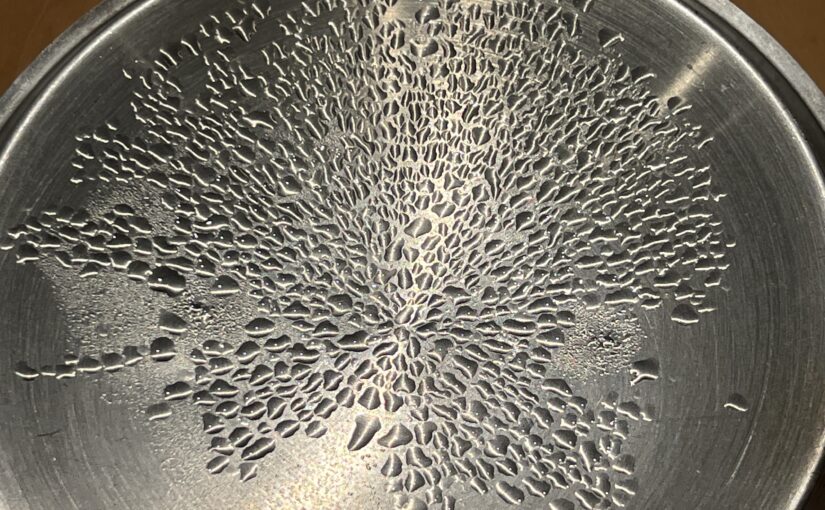Wednesday, 25 January 2023
Yesterday morning I went down to the kitchen, and in the process of making breakfast discovered that during the previous night’s kitchen cleanup, I’d neglected a single item: the lid to the steamer. It was face down, one edge on the stove top and the other on the counter, thus giving it a slight tilt. When I picked it up, I noticed a lovely patten of water droplets on the inside of the lid.
Here are some pictures:
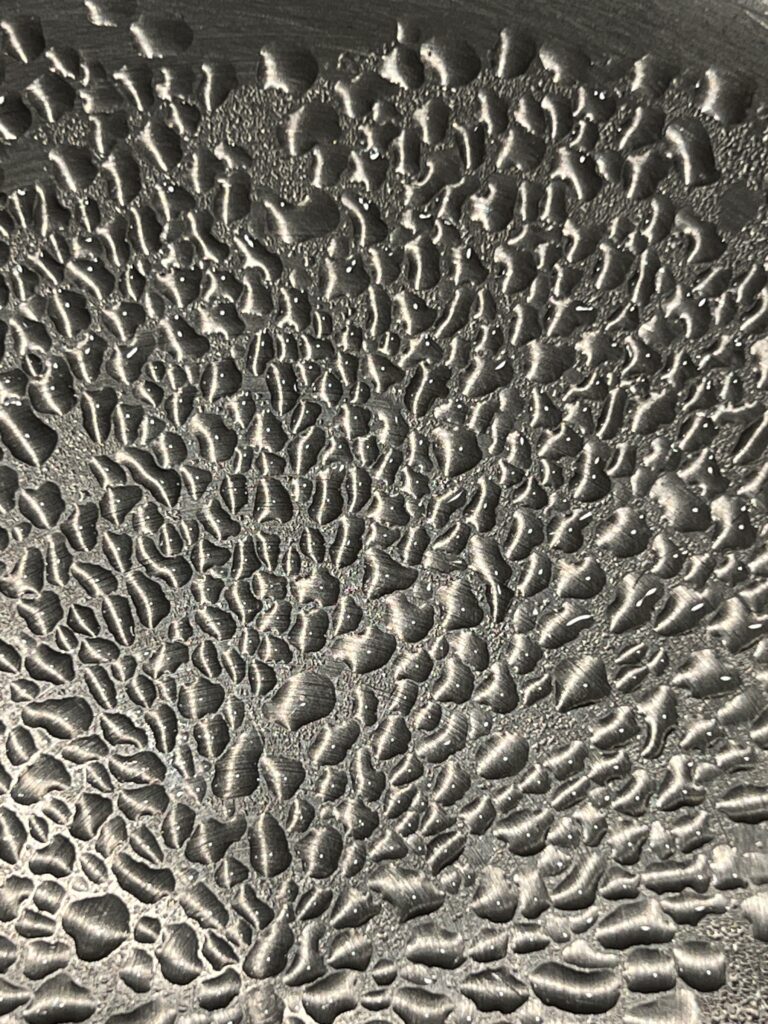
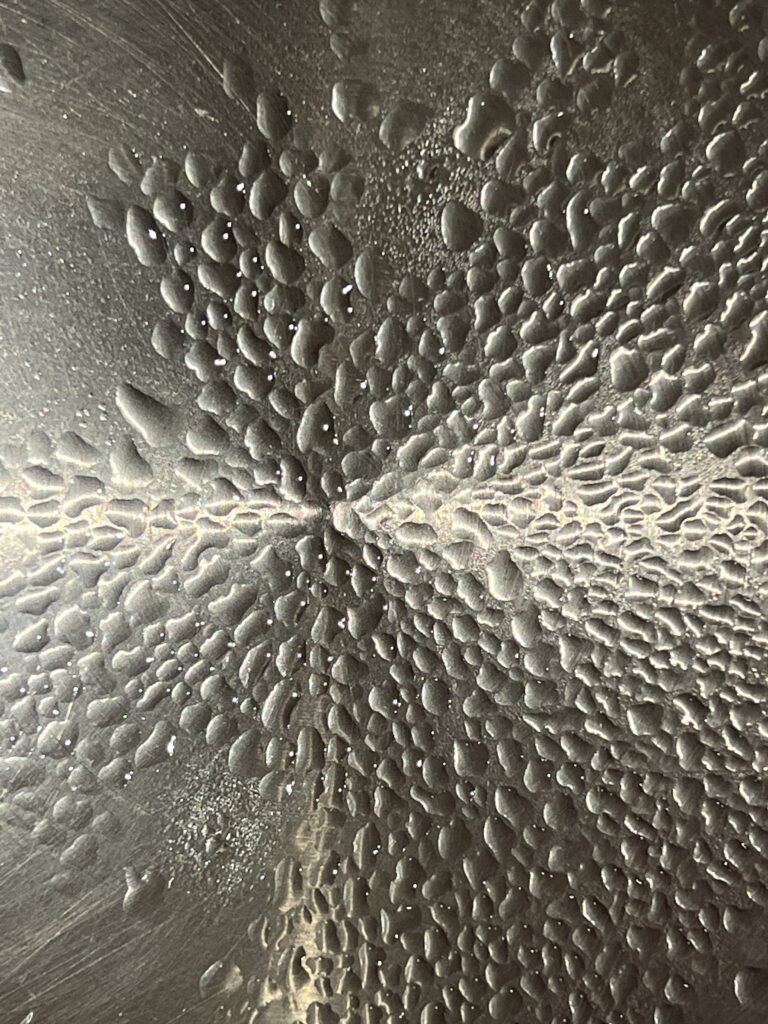
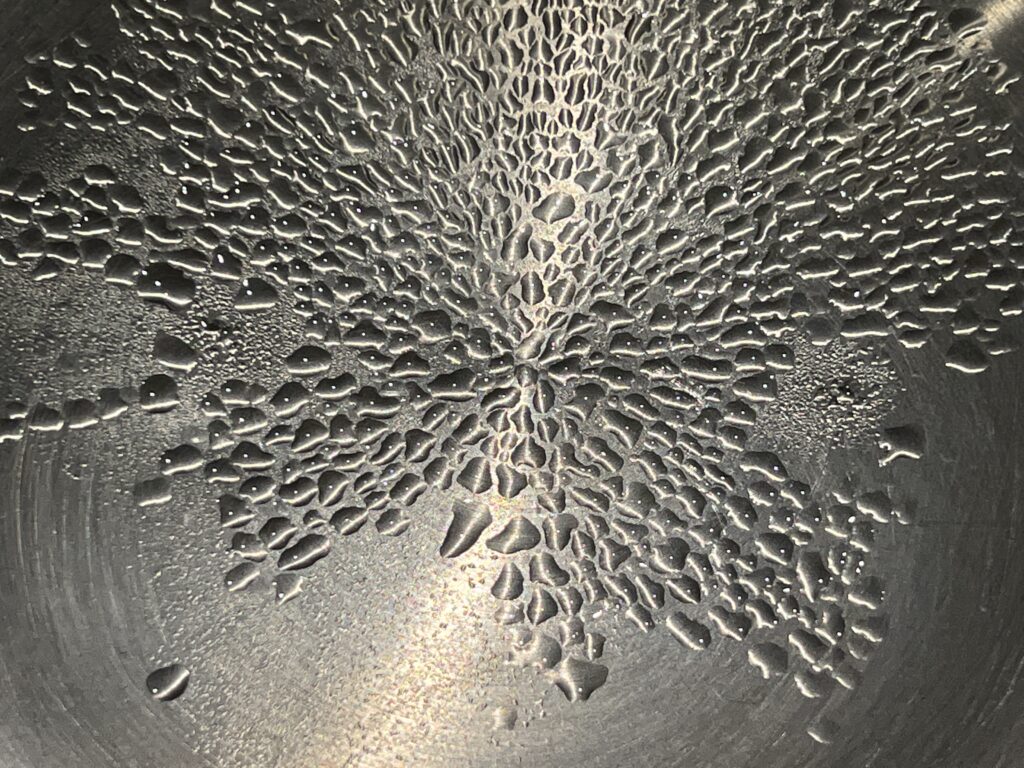
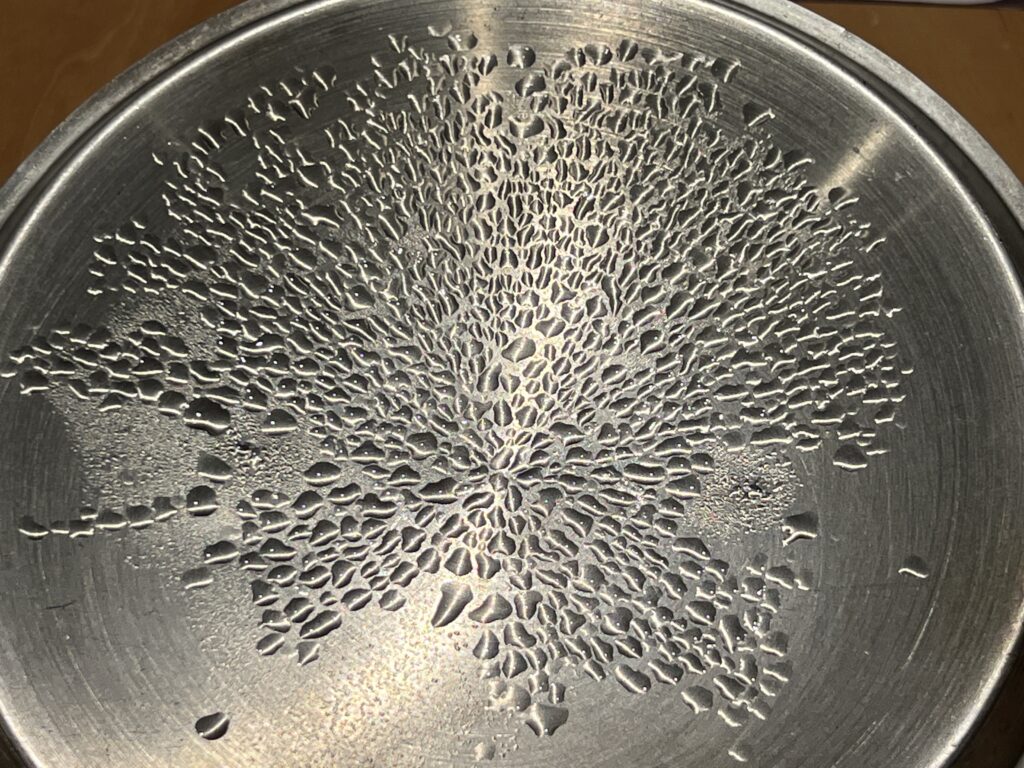
What accounts for this pattern? The pan lid was face down, and I believe one side of it was resting on the stove top, and thus it had a tilt to it: so the patter is a bit asymmetric. The pan lid is also slightly conical and concave, so the droplets, which are elongated due to gravity, have a center and fan out from that center. The droplets have coalesced into larger droplets, and I believe the asymmetry in size is a function of the tilt of the lid — the biggest droplets are on the steepest slope. And of course the ceiling lights, reflecting in the lid, and in some pictures in each drop, add their own visual effect.
I looked up research papers on water droplet coalescence, and there is a lot. Droplet condensation is of interest to those who study cloud formation and behavior, but also more generally engineers who work with liquids, especially combinations of immiscible liquids, are very interested in droplet formation and coalescence. The research is not easy to summarize, but at least for water on a surface, coalescence is governed by surface tension, interaction with surface, and forces (in my case gravity) applied to the droplets; viscosity also plays a role more generally, and since the steamer was used to steam broccoli, perhaps there is a little organic matter contributing to all of this.
Views: 6
